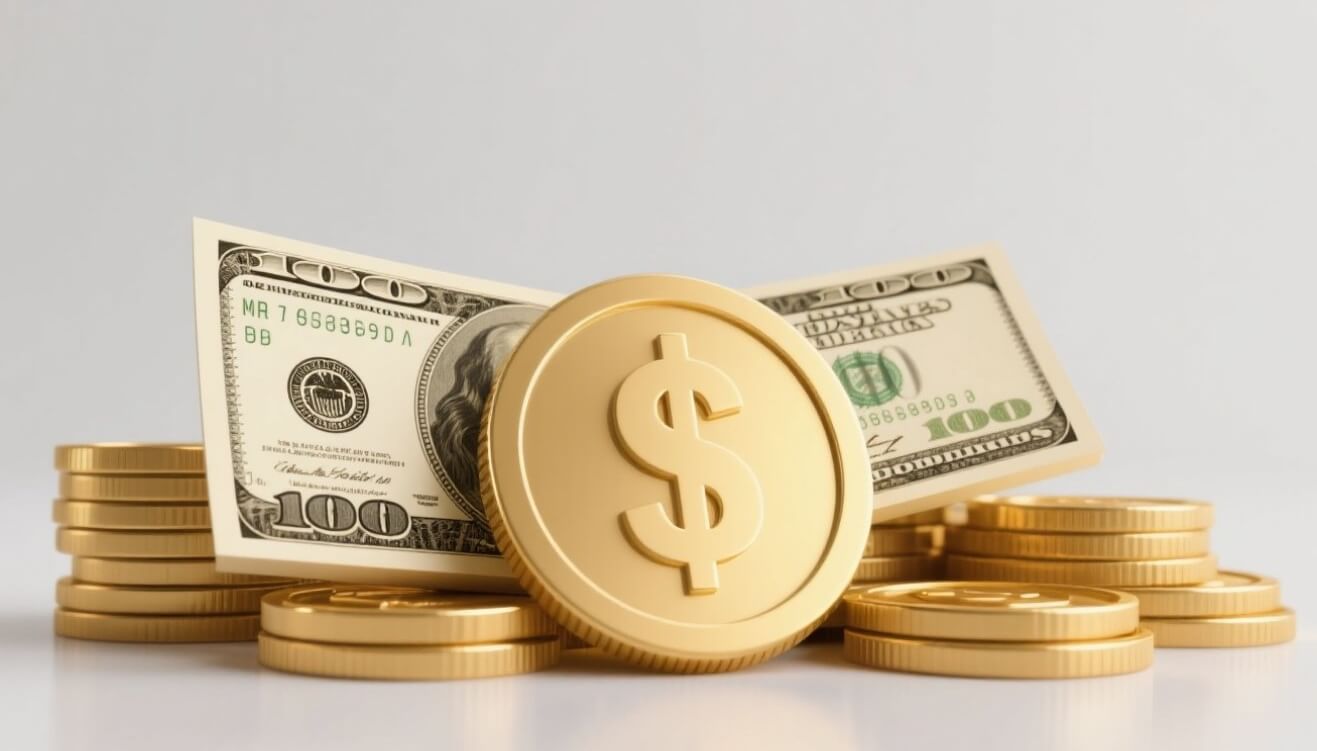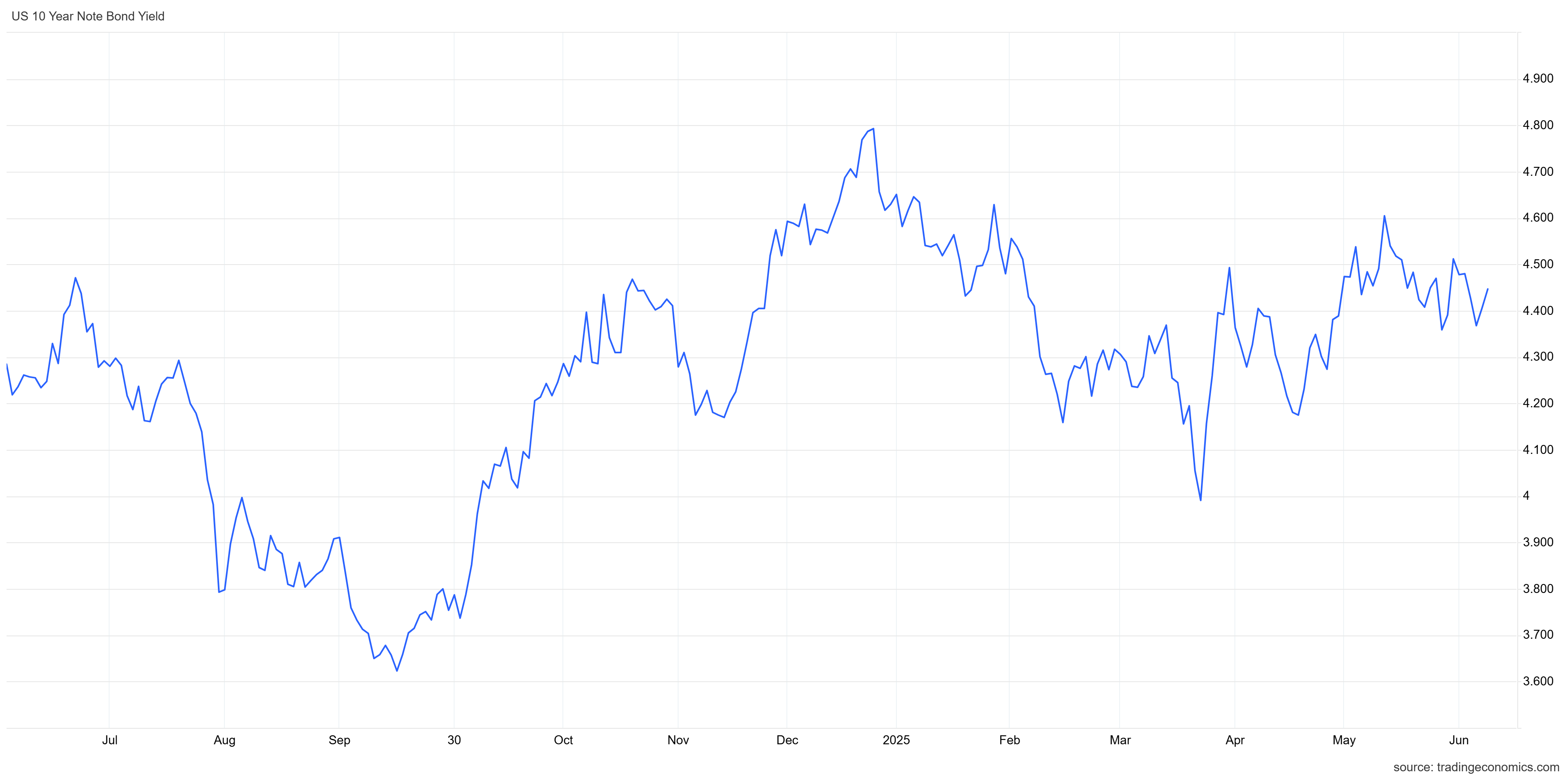- Gold Price Steady Climb and the Sudden Surge of Silver and Copper: Will Their Bull Run Extend Into 2026?
- Bitcoin Cash Unveiled: Why Did BCH Price Surpass BTC? Can it Soar to $1,000 in the Future?
- Silver Price Forecast: XAG/USD refreshes record high, looks to build on move beyond $61.00
- AUD/USD holds steady below 0.6650, highest since September ahead of China's trade data
- After the Crypto Crash, Is an Altcoin Season Looming Post-Liquidation?
- The 2026 Fed Consensus Debate: Not Hassett, It’s About Whether Powell Stays or Goes

U.S. Treasury prices are falling as expectations that the Federal Reserve will hold rates steady and as bond investors pull out of longer-dated securities amid growing concerns about President Donald Trump’s tax and spending bills.
The Federal Open Market Committee is widely expected to keep its benchmark overnight rate at 4.25%-4.50% on Wednesday.
The market consensus reflects caution about the Trump administration’s unpredictable trade policies, which could push up inflation later this year. However, mild consumer and producer price indexes for May, released last week, did not show a clear impact from higher tariffs, sparking speculation that the Fed could resume cutting rates.
Futures tracking the Fed’s policy rate show a growing likelihood of two consecutive rate cuts starting in September. The market already priced in cuts in September and December before the latest inflation data was released.
Victoria Fernandez, chief market strategist at Crossmark Global Investments, was cautious, predicting that a rate cut may not happen until the end of the year or next year.
The yield curve of long-term U.S. bonds is becoming steeper, and fiscal and geopolitical pressures have exacerbated this trend.
Neil Aggarwal, head of securitized products and portfolio manager at Reams Asset Management, pointed out that there is a reason why the yield on long-term (30-year) Treasury bonds is approaching 5%, and that is because there is a lot of pressure to sell long-term Treasury bonds.
Trump's "Big Beautiful Bill" is being debated in the Senate and may increase the U.S. deficit by $2.4 trillion over the next decade, raising concerns about the debt-to-GDP ratio, which is currently 120%.
At the same time, escalating tensions between Israel and Iran have pushed up oil prices, exacerbating concerns about inflation and pushing up U.S. Treasury yields. On Monday, the 10-year Treasury yield rose 3 basis points to 4.43%.

Carlos Casanova, senior Asia economist at Union Bancaire Privee in Hong Kong, believes that the market is now very volatile and investors have turned to safe-haven assets, pushing up crude oil prices. This may lead to an increase in 10-year U.S. Treasury yields.
“Steepening pressures on the Treasury curve could continue,” said Wei Liang Chang, Singapore-based macro strategist at DBS Group Holdings Ltd. “Investors may weigh a rise in military expenditure over the longer term due to a more uncertain geopolitical environment, and risks of inflation turning sticky if oil prices are to stay elevated.”
Read more
Before making any trading decisions, it is important to equip yourself with sufficient fundamental knowledge, have a comprehensive understanding of market trends, be aware of risks and hidden costs, carefully consider investment targets, level of experience, risk appetite, and seek professional advice if necessary.
Furthermore, the content of this article is solely the author's personal opinion and does not necessarily constitute investment advice. The content of this article is for reference purposes only, and readers should not use this article as a basis for any investment decisions.
Investors should not rely on this information as a substitute for independent judgment or make decisions solely based on this information. It does not constitute any trading activity and does not guarantee any profits in trading.
If you have any inquiries regarding the data, information, or content related to Mitrade in this article, please contact us via email: insights@mitrade.com. The Mitrade team will carefully review the content to continue improving the quality of the article.


